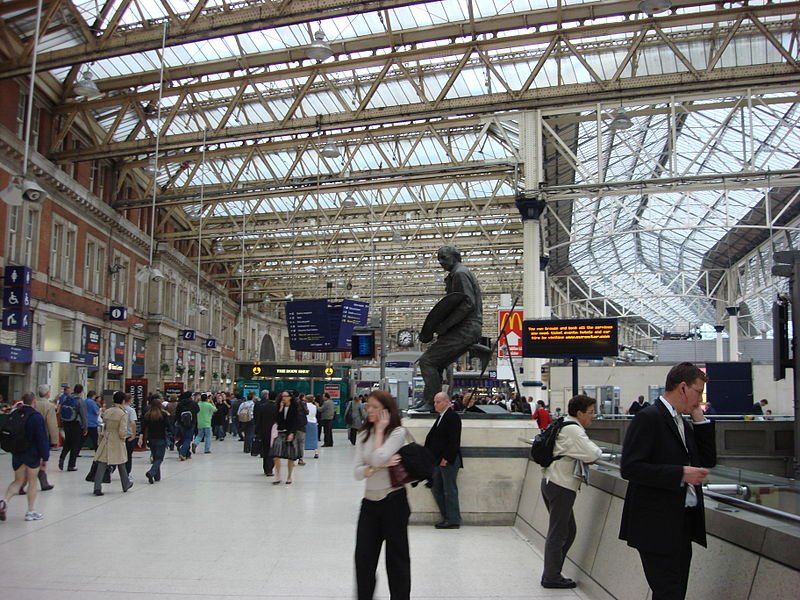London Waterloo is a major railway station and transport interchange complex in London, England. It is located in the London Borough of Lambeth, near to the South Bank. London Waterloo comprises four linked railway stations and a bus station. Adjoining it is the Waterloo International station, where the Eurostar Channel Tunnel passenger trains used to stop. Waterloo East and Waterloo Tube Station also adjoin London Waterloo.
London Waterloo is the busiest station in the United Kingdom, in terms of passenger numbers. Also located within the complex is the Waterloo Tube Station, the second busiest station of the London Underground system.
By the turn of the century, a decision was taken to tear down the original Waterloo, and start all over again. Construction on the new station began in 1900 and continued until 1922. It was badly damaged in World War II and required substantial reconstruction.
 Waterloo Station Concourse
Waterloo Station ConcourseSource: https://commons.wikimedia.org/wiki/File:Waterloo_Station_concourse.jpg
Author: Oxyman

One now-vanished curiosity about Waterloo was the "Necropolis Station". It was for London's daily funeral express to Brookwood Cemetery. Funerary trains carrying coffins left the Necropolis Station just outside the main station. It was completely destroyed in World War II, and was not brought back into operation.
Adjoining the Waterloo mainline station is Waterloo International. This is the London terminus for Eurostar trains to Belgium and France. It was built in the early 1990s at a cost of £130 million. The impressive architecture of the station, with its 400 metre long glass canopy, was widely praised and won it a string of awards when the station opened in 1994. However, when the Channel Tunnel Rail Link (High Speed 1) is completed in 14 November 2007, the Eurostar trains will terminate at St Pancras Station rather than at Waterloo. At this moment, it is not yet decided how the Waterloo International station will be used once Eurostar has left for St Pancras.
List of Train Stations in London

Copyright © 2003-2025 Timothy Tye. All Rights Reserved.

 Go Back
Go Back